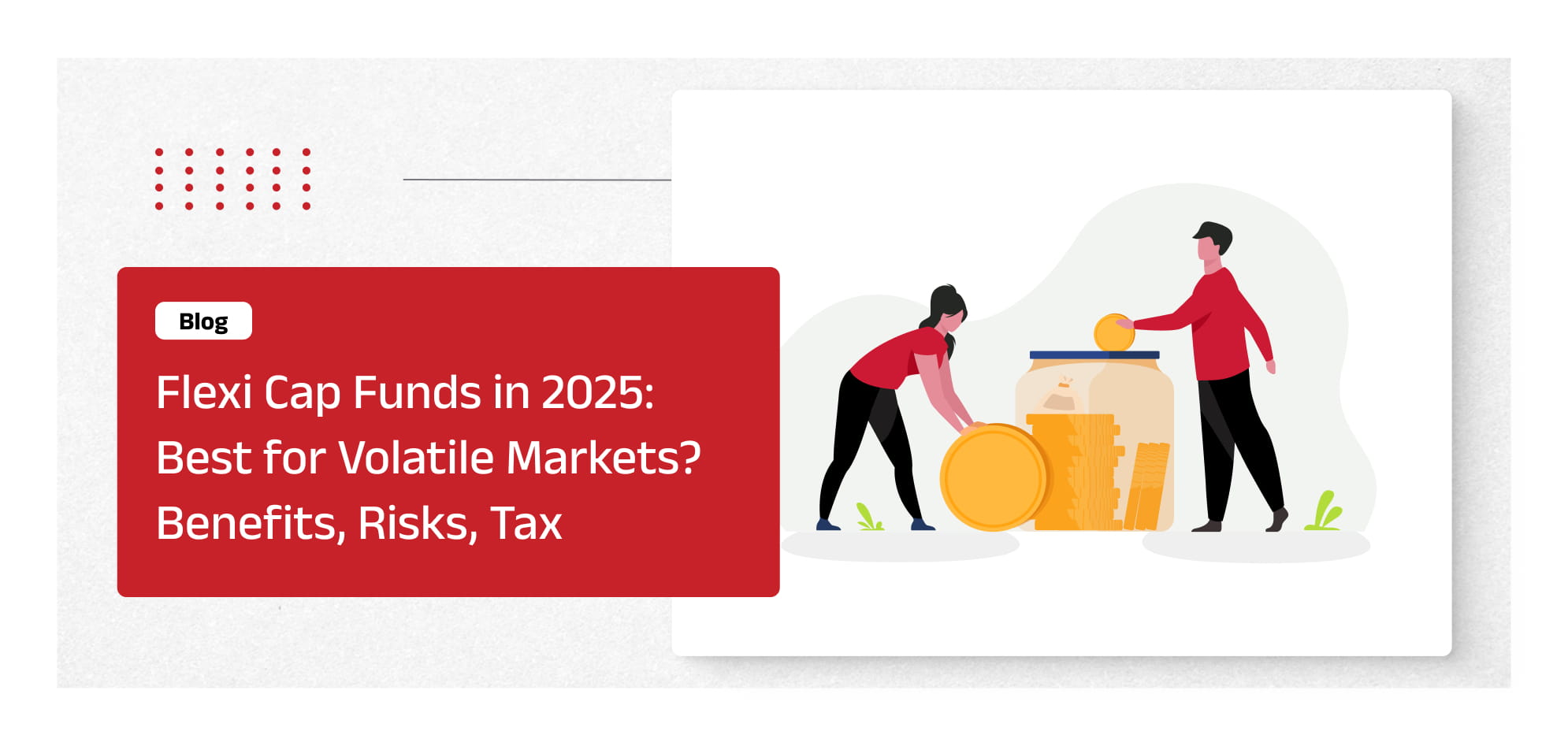-
Our Products
Our FundsFocus Funds
-
Self Care
Self-ServiceFind InformationWays To TransactPartner Solutions
-
Downloads
- Learnings
- About Us
-
More
-
Shareholders
-
Shareholders
-
Updates
-
-
SIP Calculators
- Back
-
Shareholders
Why Flexi Cap Funds are the Best Choice in Current Market Conditions

Aug 29, 2025
10 min
0 Rating
The year 2025 has ushered in a new set of challenges for investors. Following a few years of post-pandemic bounce back, markets all over the world, including that of India, are stepping into a more uncertain phase. Growth expectations have lowered, inflation remains, and global liquidity has tightened. Still, the investment market offers significant investment options. With some smart strategies, flexibility, and diversification, you can go a long way in equity investing.
One of the types of mutual funds that are prominent during such periods is flexi-cap funds. With their flexible nature, these funds can deliver both growth and a degree of risk reduction, a blend that is useful when the market situation is not clear.
Market Backdrop in 2025: Navigating Uncertainty
Trade tensions, contracted liquidity, and policy uncertainty in advanced economies have contributed to market anxiety. Equity prices have already corrected from recent highs, so investors are more risk-averse now. Meanwhile, measures outlined in the Union Budget to increase consumption, coupled with the ongoing capex cycle, provide a basis for revival.
In this environment, the question for most is not whether to invest but how to invest in a manner that is growth-sensitive and risk-friendly.
Learning About Flexi Cap Funds
These funds are basically equity mutual funds that invest at least 65% in equity and equity-related products. In contrast to other schemes that invest in a particular market segment, these funds have no restrictions on investing in small-cap, mid-cap, and large-cap stocks.
This flexibility gives them a distinctive advantage: the scope to dynamically re-allocate portfolios to match changing market conditions. For instance:
During times of increased volatility, positions in more stable large-cap equities can be raised.
During times of economic growth, exposure to high-growth mid-cap and small-cap stocks can be increased.
Features That Set Flexi Cap Funds Apart
A number of features make flexi cap funds an option for investors in the current setting:
Diversified Market Exposure: Investing across market cap segments, these funds can avoid the over-concentration risk in a specific segment.
Active Allocation Flexibility: Portfolio rebalancing by fund managers according to market direction, sector performance, and economic changes ensures great flexibility.
Potential for Higher Returns: While small-cap and mid-cap stocks offer better growth, large-cap investments can offer stability.
SEBI-Specified Structure: SEBI norms require a minimum investment of 65% in equities or equity-related instruments, maintaining the equity nature of such funds.
Flexi Cap Fund vs. Multicap Fund
The most notable difference is the rule of allocation. Multi-cap funds need to have at least 25% each of large-cap, mid-cap, and small-cap shares in their schemes at all times. The rigid allocation may hamper the capability of the fund manager to react to changes in the market.
Conversely, flexi-cap funds don't have any such hard allocation requirement. As such, during chaotic or slowing markets, they can significantly tilt towards large-cap stocks for security, and during bull phases, they can boost mid-cap and small-cap exposure to benefit from growth.
Why Flexi Cap Funds Suit Today's Market
Considering the volatility in 2025, asset allocation flexibility is extremely precious. Flexi-cap funds can quickly shift as per macroeconomic trends, sectoral performances, and investor mood. Hence, they are especially apt for:
Investors in search of the top flexi cap fund for SIP, since systematic investment can cash in on falls in the market by buying more units when prices are lower.
Long-term financial objectives like retirement planning, education for children, or long-term wealth generation over 5 to 7 years.
Investors seeking a single, diversified equity product without having to deal with multiple schemes across market sizes.
Benefits for Long-Term Investors
The flexibility of flexi cap funds can serve to smooth the ups and downs of market cycles. This, over a period, can minimise the severity of downturns and maximise the opportunity of capturing persistent growth.
They also ease portfolio management by providing multi-segment equity exposure under one fund.
These funds can provide long-term, competitive returns for those who want to stay invested for long periods.
Risks and Considerations
While flexi cap funds possess excellent advantages, they also possess some risks, making it important to align the investment with the respective risk profile and time horizon.
At the end of the day, they are equity-oriented, which means they can be influenced by market fluctuations.
The allocation and stock-picking ability of the fund manager massively impacts the returns.
The mid-cap and small-cap segments tend to be more volatile and illiquid.
Expense ratios differ between schemes and impact net returns.
Tax Implications
Taxation for flexi cap funds is identical to that of other equity-oriented mutual funds:
Gains |
Holding Period |
Tax Rate |
Short Term Capital Gains will now be taxed for investments held within 12 months |
Less than 12 months |
20% |
Long Term Capital Gains will now be taxed for investments held beyond 12 months |
More than 12 months |
12.5 % |
Final Thoughts
In the current economic transition and phase of market volatility, a timely and adequate adaptation strategy is the key to successful investment. Flexi cap funds deliver this benefit through their diversified and responsive strategy. Remember, the Flexi cap fund should align with your investment objectives.
For patients, long-term investors, especially those investing via SIPs, may find the optimal flexi cap fund category to invest in for coping with 2025's market scenario. Intensive market research and historical performance evaluation will be essential in finding the Flexi cap fund for SIP.
The information herein is meant only for general reading purposes and the views being expressed only constitute opinions and therefore cannot be considered as guidelines, recommendations or as a professional guide for the readers. The document has been prepared on the basis of publicly available information, internally developed data and other sources believed to be reliable. Recipients of this information are advised to rely on their own analysis, interpretations & investigations. Readers are also advised to seek independent professional advice in order to arrive at an informed investment decision.
Mutual Fund investments are subject to market risks, read all scheme related documents carefully.





 1800-270-7000
1800-270-7000



